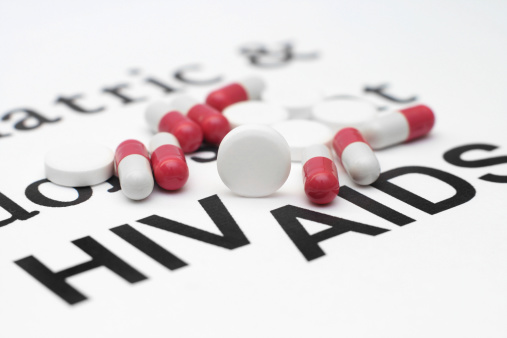
Although one of the most powerful biomedical drugs in the fight against HIV/AIDS has been available for the past four years, California health officials say the disease continues to disproportionately affect populations including Black and Latino gay and bisexual men, black women and transgender women.
Truvada, a prescription drug used for pre-exposure prophylaxis (PrEP), the practice of using antiviral medication to prevent HIV infection, is considered by many health officials to be the most effective method in reducing HIV transmission. While PrEP is not meant for everyone, it has been shown to work well in those at highest risk of acquiring HIV. When taken daily, Truvada provide as 92-99 percent reduction in risk for HIV-negative individuals.
A study released last month by AIDS Project Los Angeles, in partnership with the California HIV/AIDS Research Program of the University of California, found that gay Black and Hispanic/Latino men, who are at higher risk of HIV, are less likely to be aware of PrEP than their white counterparts. And while study participants report interest in taking PrEP, more than half indicated they didn’t know where to get a prescription for the drug or how to find a doctor that could prescribe the medication.
“Far too many Black Americans at high risk of HIV don’t know about PrEP,” says Phill Wilson, president and CEO of the Black Aids Institute in Los Angeles, the only national HIV/AIDS think tank focused exclusively on Blacks who are at risk of HIV/AIDS.
While new HIV diagnoses in the U.S. as a whole fell 19 percent between 2005 and 2014, Wilson says that new cases of HIV among Black gay and bisexual men increased by 87 percent.
“Many people mistakenly believe the HIV/AIDS epidemic is over, but it’s still a crisis in Black and Latino communities,” says Wilson, who was diagnosed with AIDS in 1987. “There hasn’t been a robust effort to engage these groups in a conversation about PrEP that resonates with them.”
To this end, the Black AIDS Institute recently held a multi-city cross-country tour to educate people about accessing and correctly using PrEP, while also ensuring those who could benefit most from PrEP have access to the drug.
Wilson says his institute’s efforts focus on not only increasing awareness of PrEP in the Black community, but also ensuring that medical providers in these communities understand and are prescribing PrEP.
San Francisco Works to Halt HIV
Health officials in San Francisco have a simple, yet ambitious goal: to make San Francisco the first jurisdiction in the U.S. to achieve zero new HIV infections, zero HIV deaths, and zero HIV stigma.
Data released this month by the San Francisco Department of Public Health, shows the city is making significant progress towards achieving this goal, but disparities between racial and ethnic groups remained. Blacks are the only racial group in San Francisco that have not seen a decline in the number of new HIV infections, and Black and Latino men have the highest HIV infection rates in the city.
The department’s 2015 HIV Epidemiology Annual Report showed the number of new HIV infections in SF hit an all-time low in 2015 with a total of 255 infections, a 17 percent decrease from the previous year.
Bradley Hare, director of HIV Care and Prevention for Kaiser Permanente in San Francisco, notes that young gay and bisexual Black and Hispanic/Latino are at an especially high risk of HIV. The Centers for Disease Control and Prevention (CDC) reports that gay and bisexual men aged 13 to 24 account for an estimated 92 percent of new HIV diagnoses among all men in their age group and 27 percent of new diagnoses among all gay and bisexual men.
In an effort to encourage more people at risk talking about PrEP, and getting tested regularly for HIV, Hare says it’s important for doctors to have conversations with high-risk patients. In the Hispanic/Latino community for example, identity and labels are important. Some men may not identify as gay, but have had sexual encounters with other men.
“Many people who are at risk don’t perceive themselves to be at risk of HIV,” Hare says.
Health officials in San Francisco have begun building on existing partnerships with youth and minority organizations, looking at how the PrEP messaging is targeting these groups, emphasizing peer to peer education programs and relying on PrEP navigators to help people at risk find an insurance plan with a lower deductible and sign up with a primary care provider, or tap into Gilead’s (the manufacturer of Truvada) Assistance Program if they are uninsured or underinsured.
PrEP Outreach to Transgender Women
Albert Liu, clinical research director of Bridge HIV at the San Francisco Department of Public Health, says efforts are also underway to educate transgender women about PrEP.
Liu says that this past April, the California HIV/AIDS Research Program (CHRP) launched the nation’s first-ever transgender focused research initiative to test, evaluate and measure interest and utilization of PrEP. The CHRP effort will enroll 700 transgender participants in three research studies, at least 40 percent will be people of color and half of those participants will be Black.
“Transgender women have some of the highest rates of HIV infection, but PrEP has been largely framed as an HIV prevention tool for gay men,” Liu says. “Our team is looking at developing a trans-specific social marketing campaign and integrating PrEP provision into transgender health care services.”
The studies will take place at UC San Francisco, the San Francisco Department of Public Health, and UC San Diego, over a four-year period, and look at whether there are any interactions between PrEP and hormone treatments, and whether the drug benefits transgender women.





